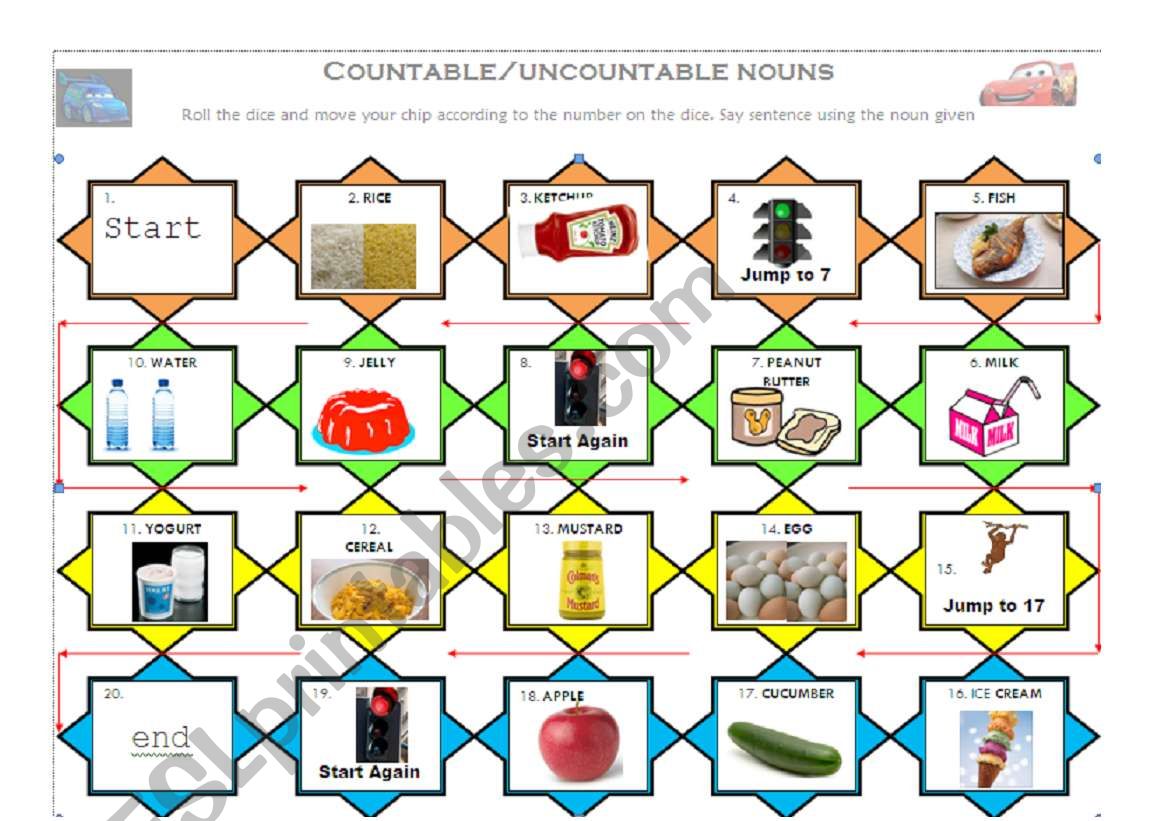Teaching countable and uncountable nouns can be challenging, but it is fundamental for English language learners. Understanding this concept improves grammar and fluency.
Explaining Countable and Uncountable Nouns in Class
Start with clear definitions. Countable nouns are items that can be counted individually, like apples, books, or chairs. You can say "one apple," "two apples," etc. Uncountable nouns (also called mass nouns) are things that cannot be counted individually, like water, sugar, or information. You can't say "one water" or "two sugars."
Use visual aids. Objects and pictures can greatly clarify this topic. Show a picture of several apples to represent countable nouns. Then, show a bottle of water to represent uncountable nouns. Explain that you can count apples individually. However, you can't count water in the same way; you need a unit of measurement, like "a bottle of water" or "some water."
Focus on the grammar that goes with each type. Countable nouns can be singular or plural. Use "a" or "an" with singular countable nouns (a book, an apple). Use plural forms for multiple items (books, apples). Uncountable nouns are always singular. Use words like "some," "much," "a little," or units of measurement (a glass of water, some sugar). This highlights the structural differences immediately.
Common Mistakes and How to Address Them
Students frequently misuse uncountable nouns. They might say "two informations" instead of "two pieces of information." Point out these errors and explain why they are incorrect. Provide correct alternatives and encourage students to practice using the correct forms.
Confusion arises with nouns that can be both countable and uncountable. Consider the word "hair." You can say "I have one hair on my shirt" (countable). You can also say "I have long hair" (uncountable). Explain that the meaning changes based on how the noun is used. Offer many examples to showcase the multiple uses.
Another challenge is understanding quantifiers. Words like "many" and "few" are used with countable nouns (many books, few apples). Words like "much" and "little" are used with uncountable nouns (much water, little sugar). Practice using quantifiers in sentences is crucial. Games help reinforce which quantifier is correct for a type of noun.
Making it Engaging with Online Games
Online games can transform learning into an engaging activity. The Countable Uncountable Nouns Online Game offers an interactive way to practice this topic. Students can identify whether nouns are countable or uncountable in a fun, competitive environment. This provides immediate feedback.
Look for games with different levels of difficulty. Beginners can start with basic nouns and gradually progress to more complex examples. Some games offer multiple-choice questions, while others involve drag-and-drop activities. Ensure that the game reinforces learning by explaining the correct answer when mistakes are made.
Incorporate the game into classroom activities. You can assign it as homework or use it as a warm-up activity before a lesson. Divide students into teams and have them compete against each other. Celebrate achievements and highlight student progress. Using leaderboards adds competition and student investment in the topic.
Integrating the Game into Your Lesson Plan
Use the game as a diagnostic tool. Before teaching the lesson, have students play the game. This can help you identify areas where students struggle. Adjust your teaching to address these specific challenges.
Utilize the game for practice and reinforcement. After explaining the rules, let students play the game in class. Encourage them to work in pairs and discuss their answers. This promotes peer learning and collaboration. Review the answers and identify common mistakes. Focus on areas that students found difficult.
Assign the game as homework. This provides additional practice outside of the classroom. Encourage students to play the game multiple times to improve their understanding. Ask students to write sentences with nouns that they practiced using in the game. It will solidify their understanding.
Additional Tips for Educators
Use real-life examples. Connect the concept to students' daily experiences. For instance, ask them to name countable and uncountable nouns they see in the classroom or at home. This helps them relate to the topic and makes it more memorable.
Focus on pronunciation. Emphasize the correct pronunciation of nouns, especially those that can be tricky. This improves their spoken English and enhances their understanding. Listen and practice with the children often.
Provide opportunities for practice. Give students ample opportunities to practice using countable and uncountable nouns in writing and speaking. Correct their mistakes gently and provide constructive feedback. Practice makes perfect for students and instructors alike.
Create a supportive learning environment. Encourage students to ask questions and express their doubts. Create a classroom culture where mistakes are seen as opportunities for learning. Learning happens when there are no fears.
Consider a reward system for active participation. It is useful to give the students positive feedback. It can include small gifts. These gifts can be educational.
Remember to be patient. Learning takes time. Celebrate small victories and acknowledge student effort. Positive reinforcement encourages students to continue learning and improving.
By implementing these strategies and utilizing online games like the Countable Uncountable Nouns Online Game, educators can make this topic accessible and engaging for all students. A well-rounded approach improves grammar and confidence.

